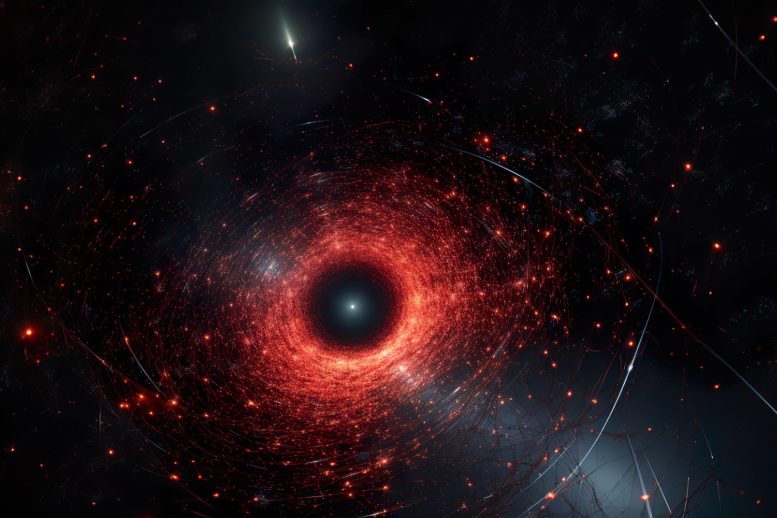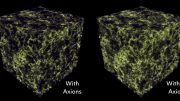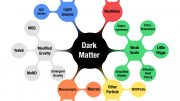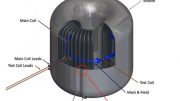
About 80% of the universe’s matter is an undetected substance called “dark matter.” While its existence has been theorized for about 90 years, scientists at the JEDI collaboration, using advanced particle accelerator techniques, are developing new methods to detect it, although conclusive evidence remains elusive.
Approximately 80% of the universe’s matter is composed of a mysterious and unseen substance. This “dark matter” was first theorized nearly 90 years ago.
“This was the only way to reconcile the velocity distribution of visible matter within galaxies with existing knowledge,” explains Jörg Pretz, one of the study’s co-authors, who is also deputy director at Forschungszentrum Jülich’s Nuclear Physics Institute and professor at RWTH Aachen University. “A ‘dark’ form of matter, previously unobserved, must additionally stabilize the galaxies.”
Physicists have been searching for this matter since the 1930s. Science has no shortage of theories, but no one has yet succeeded in actually detecting dark matter. “This is because the nature of dark matter is still completely unclear,” says Dr. Volker Hejny, who is also from Jülich’s Nuclear Physics Institute and, like his colleague Jörg Pretz, is a member of the international JEDI collaboration that conducted the experiment. JEDI stands for Jülich Electric Dipole moment Investigations and scientists involved in the collaboration have been working on the measurement of the electric dipole moments of charged particles since 2011.
“Dark matter is not visible and has so far only revealed itself indirectly through its gravity. Its effect is comparatively tiny, which is why it only really becomes apparent in the case of enormously large masses – such as entire galaxies.”
Theoretical physicists have already proposed a number of hypothetical elementary particles that dark matter could be composed of. Depending on the properties of these particles, various methods could be used to detect them – methods that do not require the highly complex detection of gravitational effects. These methods include axions and axion-like particles.

In their experiment, the JEDI scientists utilized a special feature of the Jülich particle accelerator COSY: the use of polarized beams. Credit: Forschungszentrum Jülich / Ralf-Uwe Limbach
“Originally, axions were intended to solve a problem in the theory of the strong interaction of quantum chromodynamics,” explains Pretz. “The name axion can be traced back to the winner of the Nobel Prize in Physics, Frank Wilczek, and refers to a brand of detergent: the existence of the particles was supposed to ‘clean up’ the theory of physics, so to speak.”
To detect the axions, scientists in the JEDI collaboration used the spins of particles. “Spin is a unique property of quantum mechanics that makes particles behave like small bar magnets,” explains Hejny. “This property is utilized, for example, in medical imaging for magnetic resonance imaging, or MRI for short. As part of this process, the spins of atomic nuclei are excited by strong external magnetic fields.”
MRI technology is also used to search for dark matter. While in normal MRI the atoms are at rest, in an accelerator the particles move almost at the speed of light. This makes the examinations in some areas much more sensitive and the measurements more accurate.
In their experiment, the JEDI scientists utilized a special feature of the Jülich particle accelerator COSY, namely the use of polarized beams. “In a conventional particle beam, the spins of the particles point in random directions,” says Pretz. “In a polarized particle beam, however, the spins are aligned in one direction.” There are only a few accelerators worldwide that have this capability.
If, as the scientists suspect, a background field of axions surrounds us, then this would influence the motion of the spins – and could therefore ultimately be detected in the experiment. However, the anticipated effect is tiny. The measurements are not yet accurate enough. However, although the JEDI experiment has not yet found evidence for dark matter particles, the researchers have managed to further narrow down the possible interaction effect. And perhaps even more significant, they were able to establish a new and promising method in the search for dark matter.
Reference: “First Search for Axionlike Particles in a Storage Ring Using a Polarized Deuteron Beam” by S. Karanth et al. (JEDI Collaboration), 12 July 2023, Physical Review X.
DOI: 10.1103/PhysRevX.13.031004









This article should say there is a theory about the existence of dark matter, not that dark matter exists. Alternative explanations such as variable gravity effects also explain galactic velocities and do not require dark matter.
All the reasons for ruling out radiated spin 2 massless fields for gravity seem to be supported solely through global militance these days.
Another hypothetical experiment. Another possibility, from a view of String Theory, is that Dark Matter appears to us as an effect of string/anti-string annihilations. As you may know, quantum mechanics requires that strings must be formed as pairs in the quantum foam – a string and an anti-string – that immediately annihilate each other. Quantum mechanics also requires both the string and anti-string to be surrounded by “jitters” that reduce their monstrous vibrating energies. What if this jitter remains for a fraction of an instant after their string/anti-string annihilations? This temporary jitter would be seen by us as matter, via E=mc2, for that instant before it too returns to the foam. That’s why we never see it – the “mass” lasts only for that instant but is repeated over and over and over, all over. Specifics on this can be found by searching YouTube for “Dark Matter – A String Theory Way”
I assure every stack-holder of Dark Matter Search Program that the present theories on the dark matter are not sufficient to identify the dark matter particle. With these theories even in next 1000 years the identity of Dark particle can not be revealed. Present instrumentation and grants by NSF, Simon Foundation, Ford Foundation, Kavali Foundation is useless and wastage of money.
Dark matter is void of all matter (you can’t see what is not there)! Any other questions or debate about the theory of dark matter?
There are substance in liquid form, heavy as mercury and some red others black but very rare to find. If brought to the surface of the earth it disappears. Could that be dark matter?
It’s now been more than a decade since I first posted a video on YouTube (YT, since deleted and uploaded by me to Odysee dot com after my comments on Covid-19 and the real cause of so much premature mortality in the US were censored via YT deletion) demonstrating mere rotation intensifies gravity in solid objects to account for the observed effects of imaginary so-called “dark matter.” It cost me less than US$ 25.00 to make that first video. Since, too, after all this time, money and writings the entire physics research community has yet to prove me wrong. Therefore, I still claim to be right and solely deserving of credit for my lay discovery of the true nature of locally induced/generated radiating pulsating lines of gravity force. To be fair, I still can only speculate on what higher force (e.g., reverberations of the Big Bang?) induces that gravity to radiate and be intensified with rotation.